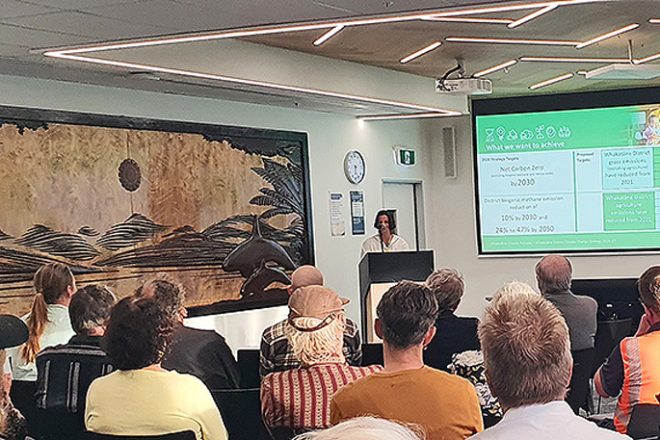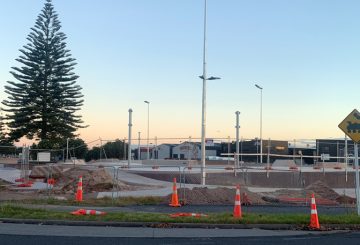Cộng đồng Whakatāne đang được khuyến khích chia sẻ suy nghĩ của họ về chiến lược biến đổi khí hậu của hội đồng khi cuộc khủng hoảng tiếp tục tác động đến nhà cửa, việc làm và thậm chí cả cuộc sống. Glen Crowther, giám đốc điều hành của Sustainable Bay of Plenty, đã khen ngợi dự thảo Chiến lược Biến đổi Khí hậu của Hội đồng Quận Whakatāne tại một sự kiện gần đây. Ông so sánh cách tiếp cận của họ một cách thuận lợi với các hội đồng khác, ca ngợi những nỗ lực chủ động của họ để tham gia với cộng đồng về vấn đề này.
Chiến lược của hội đồng nhằm giảm tổng lượng khí thải nhà kính xuống 7% vào năm 2027, 12% vào năm 2030, 29% vào năm 2040 và 39% vào năm 2050. Nó cũng đặt ra các mục tiêu để giúp cộng đồng thực hiện thay đổi năng lượng trong nhà, trường học và nơi làm việc. Thị trưởng Whakatāne Victor Luca bày tỏ mối quan tâm sâu sắc của mình về biến đổi khí hậu và nhấn mạnh rằng đó là trách nhiệm của mọi người.
Cassy Ball, giám đốc dự án biến đổi khí hậu của hội đồng, nhấn mạnh rằng biến đổi khí hậu không phải là vấn đề trong tương lai mà là vấn đề hiện tại. Cô trích dẫn cơn bão Gabrielle làm ví dụ, ước tính rằng nó có thể tiêu tốn hơn 2% GDP quốc gia, có khả năng cao hơn những gì cần thiết để giải quyết cuộc khủng hoảng biến đổi khí hậu.
Chiến lược của hội đồng, được soạn thảo lần đầu tiên vào năm 2020, đang được xem xét do những thay đổi chính trị, tiến bộ công nghệ và sự thay đổi xã hội. Hội đồng đã xác định 226 hành động và đang tìm kiếm ý kiến đóng góp của công chúng về chúng. Không phải tất cả các hành động này đều được tài trợ trong dự thảo kế hoạch dài hạn hiện tại. Cộng đồng được khuyến khích gửi phản hồi của họ trước ngày 12 tháng 4.




























































